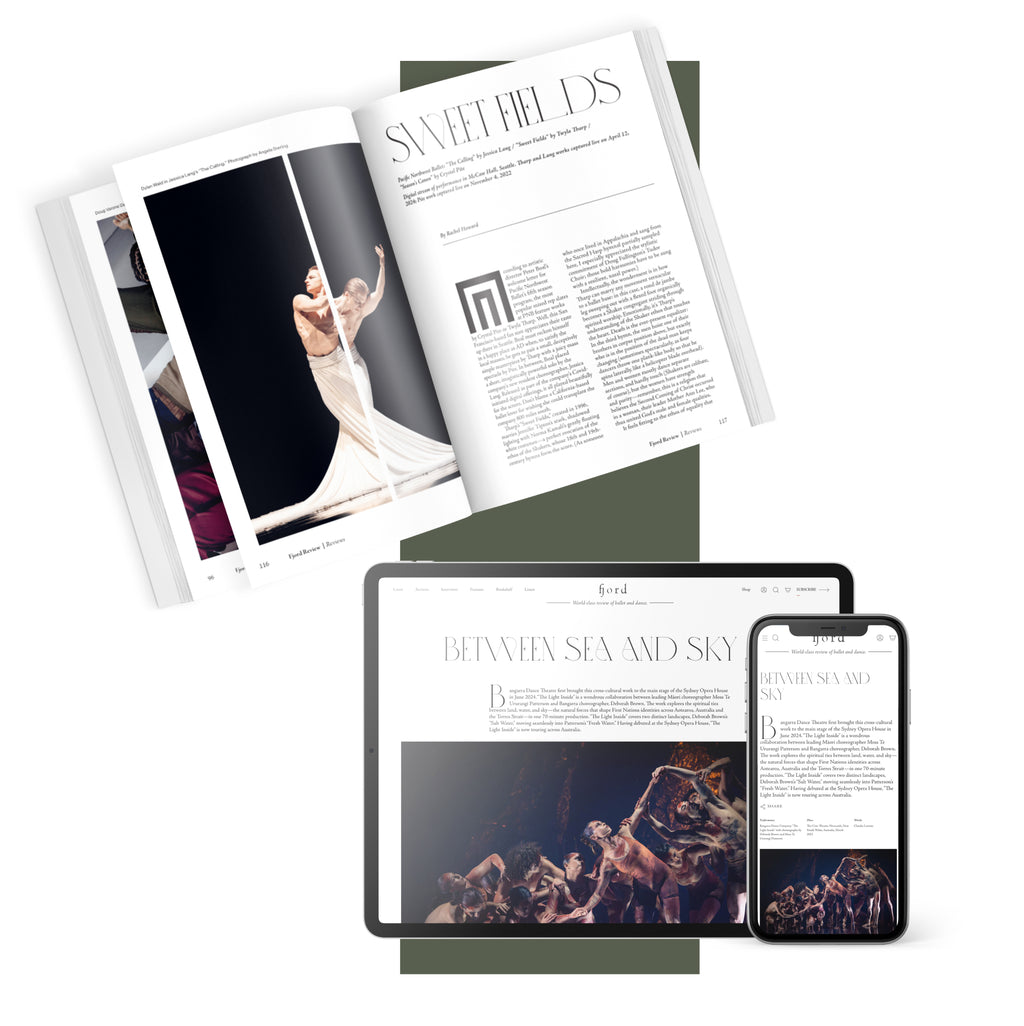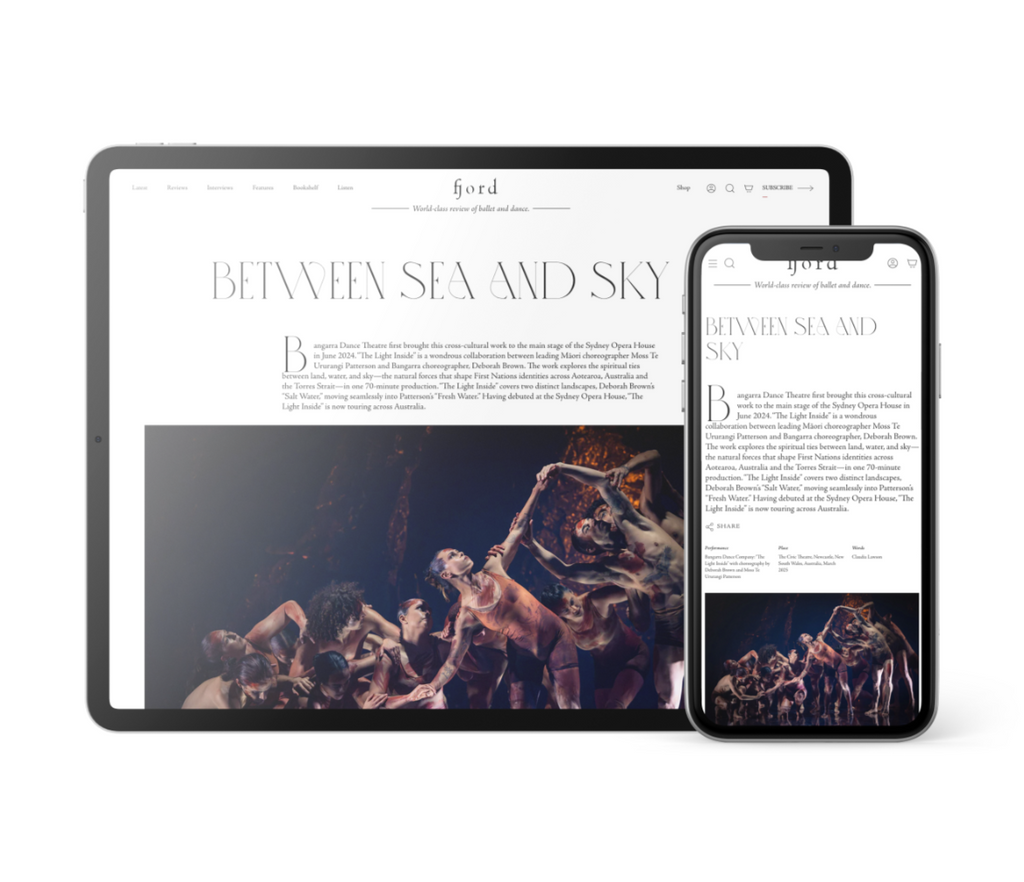Lima’s “Elis” was inspired by Brazilian singer Elis Regina and had the improvised feeling of friends at a party. Lima’s friendship and familiarity with his colleagues lent itself well to a compelling aptitude for playing to each dancer’s strengths—Addison, who took on a sassy, playful demeanor for her all-too-brief solo moment, was a particular highlight.
After a second intermission, the evening closed with Adams’ “Mass Hysterical,” a chilling and occult abstraction on the themes of isolation and groupthink. The music, created by composer Katy Jarzebowski, aided this feeling with its rhythmic bone-cracking sounds and deep, sonorous notes.
“Mass Hysterical” was at its most compelling when it was somewhat unknowable. As the dancers twisted and turned about the stage, my brain followed their pathways, trying to figure out what to make of the display before me. As soon as the meaning landed, an ending felt imminent, and the audience erupted in applause. But the piece continued with two additional sections, a slow duet for Hadriel Diniz and Victoria Vassos, followed by a solo for Diniz.
Admittedly, this critic grew antsy towards the end of the evening's third work, which may have hindered my enjoyment of the final two. There’s a reason the triple bill is so popular—five works on one program is a lot, particularly when those offerings are as wide-ranging as the ones presented in Works from Within. Each of the evening’s works showed merit, but the overall structure didn’t provide sufficient room for the ballets to breathe—nor for the audience to let the art settle in their hearts and minds.











comments